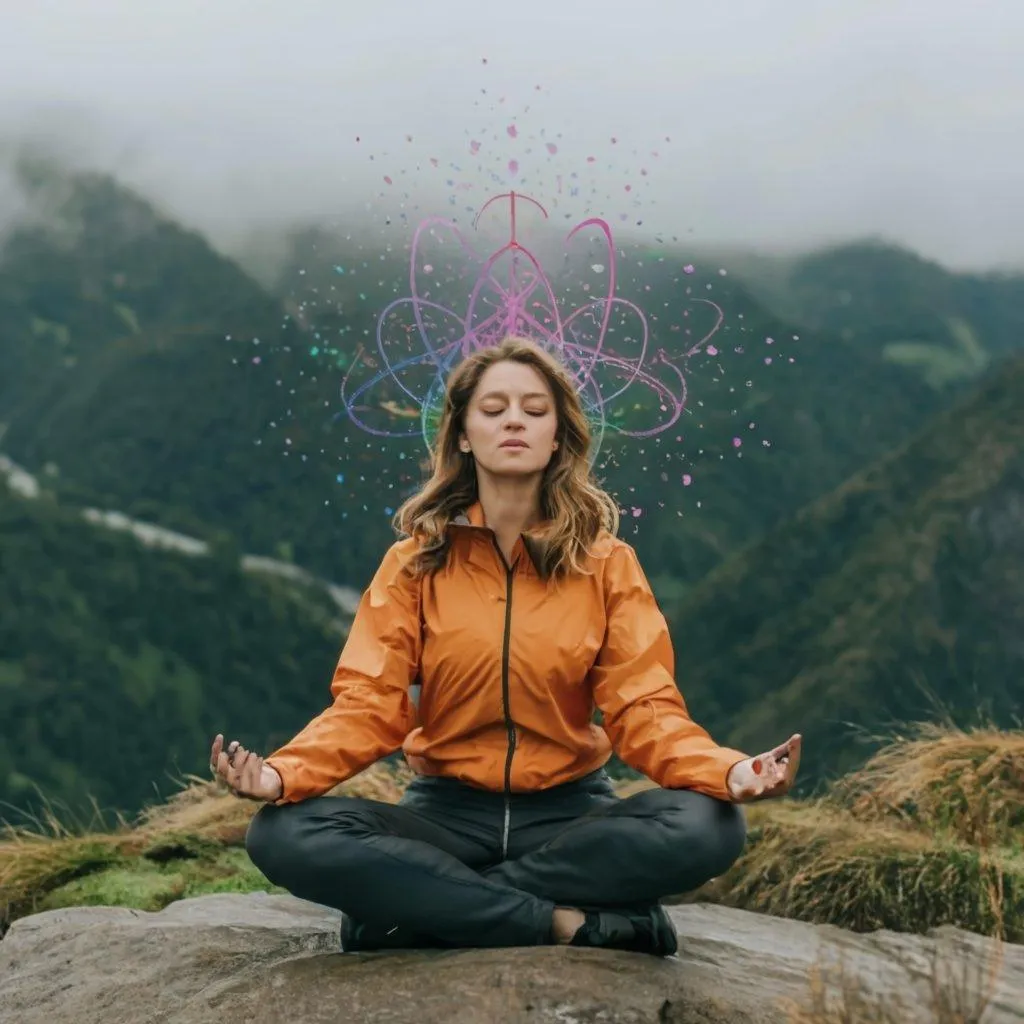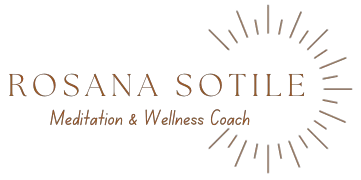Articles of Knowledge

Meditation 101
By: Rosana Sotile, Chopra Certified Well-Being Coach
"Meditation is not a way of making your mind quiet. It is a way of entering the quiet that is already there." - Deepak Chopra
The impact of stress on the body and mind is far-reaching. When you feel stressed, your body reacts by provoking the fight-or-flight response. The fight-or-flight response is designed to help you deal with a (perceived) dangerous situation—either by fighting it off or running away.
To prepare you for both of those things, your sympathetic nervous system floods certain hormones into your blood, including adrenaline and cortisol, which cause many essential body functions to increase. Your breathing quickens, your heart beats faster, your blood sugar increases to give you more energy, and your brain uses more oxygen as it moves into high alert. At the same time, certain body functions that aren’t needed for the fight-or-flight response stop working, like your digestive, immune, and reproductive systems.
When stress becomes chronic, it can affect your mental and physical , putting you at greater risk for heart disease, heart attack, stroke, diabetes, and even some forms of cancer.
The Good news? There are ways to mitigate stress, and meditation is one of the most effective practices for this. It not only lowers the stress levels in your current lifestyle, but it also acts as a preventative measure for future illnesses and diseases that are caused by chronic stress. It does this by enacting the healing capabilities of our parasympathetic nervous system to promote a physical and mental state of restful awareness.
What is meditation?
Meditation is considered one of the six pillars of well-being. Most of us live very active lives and we have to deal with the demands of a busy, stimulating world. Even when we're in a quiet setting, our minds are usually filled with activity, busy with thoughts about the past, plans for the future, and a stream of interpretations, judgments, and stories about the events of our lives.
Meditation is a journey from activity into silence. It is an ancient technique that allows you to settle into quieter and quieter levels of awareness until you experience the pure silence within. In the process of going within, you start to purify the body: releasing stress, fatigue, toxins, and everything that prevents you from experiencing your essential nature. You reconnect to who you really are—pure love, pure joy, and pure potential—and then you bring this person back into your everyday life. Meditation restores your memory of wholeness and it provides a variety of profound benefits for your mind-body physiology.
Benefits of Mediation
The purpose of meditation depends on the meditator. Some begin meditating because of a doctor’s recommendation, for the health benefits of lowered blood pressure, stress reduction, and better sleep. Others come to meditation seeking relief from anxiety or to help with an addiction, such as smoking or overeating. And many other people are drawn to meditation because they just want to experience the expanded states of consciousness, maybe because they read about it or heard about it from friends, family, teachers or ancient wisdom.
Regardless of why, anyone who meditates regularly receives profound benefits on all of levels—physical, mental, emotional, and spiritual. Regular meditation can prevent disease by turning off the genes that contribute to diseases such as Alzheimer's, autoimmune illnesses and even some types of cancer. It also promotes anti-aging genes and hormones, as well as improving the immune system and better sleep.
Emotionally, meditation decreases stress, depression and addictive behaviors, and it increases focus, memory and learning. It also gives us the ability to move away from our experiences of painful emotions that constrict awareness, including anger, hostility, guilt, fear, and shame. Instead, it moves us toward the ability to respond consciously rather than reacting in a conditioned, melodramatic way. Meditation gives us the expanded experience of healing emotions such as love, compassion, joy, equanimity, and gratitude.
And then of course, meditation offers a path to discover who you really are. In meditation, you go beyond the limited identity that your mind creates, and you get to experience your true self, which is pure, unbounded consciousness.
While these benefits will become more sustained with a regular practice, you’ll begin to experience them the very first time you sit down to meditate, and especially in the first few days of daily practice.
Meditation offers a path to discover who you really are.
How to meditate?
Ok, so now we have all this great information about meditation- but how do we actually DO it? Well the good news is that there is no wrong way to meditate. It can be practiced anywhere. The only two things you really need to be able to do, is to sit down and close your eyes. And even if you can’t close your eyes or you feel uncomfortable doing so, you can keep them open with a soft gaze. However, when your eyes are open, your attention is usually drawn outward into activity. Remember, the purpose of meditation is the opposite: to move from outward activity to inner silence.
One of the most effective types of meditation is mantra meditation. A mantra is an instrument of the mind—a sound or vibration—that you can use to go beyond the level of activity to quieter levels of awareness. It is a short phrase repeated silently within the mind to assist with mental focus. In the Vedic tradition there are mantras for all purposes, many of which have meanings or intentions. The ones used for silent meditation have no particular meaning.
When you begin using a mantra in meditation, it acts as a thought but without any meaning. With nothing to keep you at the active level of the mind, your awareness will turn within. The mantra acts as an anchor to stabilize the mind and allows you to move away from thought and back to the mantra. Sometimes it flows like waves: lots of thoughts then returning focus on repeating the mantra, then lots of thoughts and then returning back to the mantra- over and over. Again, this is why it’s called a practice.
So Hum is one of the most widely used mantras, because while it has no particular meaning, it is associated with the breath. When So Hum is repeated silently to ourselves during meditation, and in conjunction with the breath, the mantra relaxes the body and quiets the mind. This looks like taking a long slow inhale to the word So, silently in your mind, and a long slow exhale to Hum- again silently in your mind. Eventually, the breath will return to normal, and your mind will ride the waves of thoughts coming and going, with the mantra in background, stabilizing and anchoring.
The sound and vibration of So Hum allows you to identify yourself with who you truly are, rather than believing you are the everyday activity of your body/mind. This is the notion of “I Am,” your true essence of pure consciousness, not your physical body or mental body. By activating this part of your mind-body, your awareness will begin to shift from external activity to the inner realm of silence and infinite possibilities.
What will I experience?
You will probably have many different types of experiences during meditation.
You may experience a lot of thoughts, which is completely normal, even for seasoned meditators.
• You may fall asleep.
• You may be repeating your mantra.
• You may slip into the silent space (gap) between thoughts.
You may also have a lot of emotions that come up, maybe even some that you didn’t realize were there. Sometimes you may even see images, memories, colors, shapes, light or other visual images. And you’ll most likely experience different sensations in your body.
All of this is completely normal. It’s just your body-mind shifting into the state of restful awareness, and it may still be a new experience for you.
There’s also a misconception that for meditation to be done properly, there should be no thoughts. This is humanly impossible. The purpose is to not evaluate your thoughts or experiences during meditation, but rather allow them to flow in and out, just like your breath, and keep returning your awareness back inward, while becoming the observer of your thoughts.
The real experience of meditation is felt when you return to your everyday lifestyle. Overtime, and with consistent practice, you will begin to notice changes in your perception of the world around you. You may begin to feel physically better, as some parts of your body will begin to self-heal from the constant release of toxins.
You may also notice more emotional regulation; what once felt like difficult emotions to deal with now seem more manageable. It may feel easier for you to express your needs and make decisions with emotional intelligence and awareness. There will be more joy and vitality, and navigating the ups and downs of life will feel lighter and easier. This is what life feels like in the state of “flow” - purifying your mind, body and spirit through meditation and returning to your higher purpose of wholeness and love.
It just takes practice! Remember, five minutes a day of meditation will have a profound effect on your well-being, compared to zero minutes a day.
Want more?
I have a collection of FREE guided meditations and affirmations exclusively for my Sacred Space Digest members. Sign up for my free weekly wellness guide and get access TODAY!

Rosana Sotile is the founder of Sacred Space Health, LLC and holds certifications as a Well-Being Coach, Primordial Sound Meditation Instructor, and an Ayurveda Health Instructor from the Institute for Integrative Nutrition and Chopra Education. She has a passion for helping people discover their inner sacred space and embrace the power of manifesting new realities. She also enjoys spending her free time in nature, especially at home in South Louisiana with her four children and one cat.
Rosana can be reached at info@rosanasotile.com, or direct message on LinkedIn

